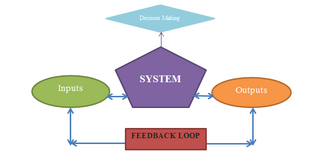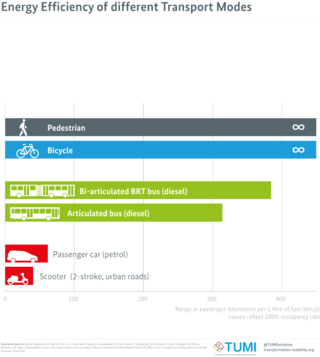Instructional design (ID), also known as instructional systems design (ISD), is the practice of systematically designing, developing and delivering instructional materials and experiences, both digital and physical, in a consistent and reliable fashion toward an efficient, effective, appealing, engaging and inspiring acquisition of knowledge. The process consists broadly of determining the state and needs of the learner, defining the end goal of instruction, and creating some "intervention" to assist in the transition. The outcome of this instruction may be directly observable and scientifically measured or completely hidden and assumed. There are many instructional design models but many are based on the ADDIE model with the five phases: analysis, design, development, implementation, and evaluation.
In computer architecture, instructions per cycle (IPC), commonly called instructions per clock is one aspect of a processor's performance: the average number of instructions executed for each clock cycle. It is the multiplicative inverse of cycles per instruction.
Industrial ecology (IE) is the study of material and energy flows through industrial systems. The global industrial economy can be modelled as a network of industrial processes that extract resources from the Earth and transform those resources into products and services which can be bought and sold to meet the needs of humanity. Industrial ecology seeks to quantify the material flows and document the industrial processes that make modern society function. Industrial ecologists are often concerned with the impacts that industrial activities have on the environment, with use of the planet's supply of natural resources, and with problems of waste disposal. Industrial ecology is a young but growing multidisciplinary field of research which combines aspects of engineering, economics, sociology, toxicology and the natural sciences.
Sociotechnical systems (STS) in organizational development is an approach to complex organizational work design that recognizes the interaction between people and technology in workplaces. The term also refer to coherent systems of human relations, technical objects, and cybernetic processes that inhere to large, complex infrastructures. Social society, and its constituent substructures, qualify as complex sociotechnical systems.

Applied psychology is the use of psychological methods and findings of scientific psychology to solve practical problems of human and animal behavior and experience. Educational and organizational psychology, business management, law, health, product design, ergonomics, behavioural psychology, psychology of motivation, psychoanalysis, neuropsychology, psychiatry and mental health are just a few of the areas that have been influenced by the application of psychological principles and scientific findings. Some of the areas of applied psychology include counseling psychology, industrial and organizational psychology, engineering psychology, occupational health psychology, legal psychology, school psychology, sports psychology, community psychology, neuropsychology, medical psychology and clinical psychology, evolutionary psychology, human factors, forensic psychology and traffic psychology. In addition, a number of specialized areas in the general area of psychology have applied branches. However, the lines between sub-branch specializations and major applied psychology categories are often mixed or in some cases blurred. For example, a human factors psychologist might use a cognitive psychology theory. This could be described as human factor psychology or as applied cognitive psychology. When applied psychology is used in the treatment of behavioral disorders there are many experimental approaches to try and treat an individual. This type of psychology can be found in many of the subbranches in other fields of psychology.
Engineering management is the application of the practice of management to the practice of engineering. Engineering management is a career that brings together the technological problem-solving ability of engineering and the organizational, administrative, legal and planning abilities of management in order to oversee the operational performance of complex engineering driven enterprises. A Master of Engineering Management (MEM) is sometimes compared to a Master of Business Administration (MBA) for professionals seeking a graduate degree as a qualifying credential for a career in engineering management.
Business analysis is a professional discipline of identifying business needs and determining solutions to business problems. Solutions often include a software-systems development component, but may also consist of process improvements, organizational change or strategic planning and policy development. The person who carries out this task is called a business analyst or BA.
Design methods are procedures, techniques, aids, or tools for designing. They offer a number of different kinds of activities that a designer might use within an overall design process. Conventional procedures of design, such as drawing, can be regarded as design methods, but since the 1950s new procedures have been developed that are more usually grouped together under the name of "design methods". What design methods have in common is that they "are attempts to make public the hitherto private thinking of designers; to externalise the design process".
In computing, computer performance is the amount of useful work accomplished by a computer system. Outside of specific contexts, computer performance is estimated in terms of accuracy, efficiency and speed of executing computer program instructions. When it comes to high computer performance, one or more of the following factors might be involved:
Human performance technology (HPT), also known as human performance improvement (HPI), or human performance assessment (HPA), is a field of study related to process improvement methodologies such as organization development, motivation, instructional technology, human factors, learning, performance support systems, knowledge management, and training. It is focused on improving performance at the societal, organizational, process, and individual performer levels.

Regenerative design is a process-oriented whole systems approach to design. The term "regenerative" describes processes that restore, renew or revitalize their own sources of energy and materials. Regenerative design uses whole systems thinking to create resilient and equitable systems that integrate the needs of society with the integrity of nature.

Sustainable gardening includes the more specific sustainable landscapes, sustainable landscape design, sustainable landscaping, sustainable landscape architecture, resulting in sustainable sites. It comprises a disparate group of horticultural interests that can share the aims and objectives associated with the international post-1980s sustainable development and sustainability programs developed to address that humans are now using natural biophysical resources faster than they can be replenished by nature.

In computer engineering, computer architecture is a description of the structure of a computer system made from component parts. It can sometimes be a high-level description that ignores details of the implementation. At a more detailed level, the description may include the instruction set architecture design, microarchitecture design, logic design, and implementation.
Learning Enterprises is the type of learning which reflected capabilities that combine types of learning into more general expertise developed by Gagné and Merrill (1990). This is additional type of learning to Gagné’s types of learning: declarative knowledge, intellectual skills, cognitive strategies, attitudes, and psychomotor skills. Learning goal not always include one learning outcome. The multiple objectives are frequently occurred when instruction handled not just single topic or lesson to the course. Integration of multiple objectives may usefully be conceived in terms of the more comprehensive activity in which the human performer is engaged, which we call an enterprise. An enterprise is a purposive activity that may depend for its execution on some combination of verbal information, intellectual skills, and cognitive strategies, all related by their involvement in the common goal. Given such an integrative goal of performance resulting from instruction, the various single objectives are viewed as being integrated as constituents of an enterprise schema.
Life cycle thinking is a holistic approach to thinking about the environmental impact of products beyond manufacturing to also include extraction, consumption and end of life. This style of thinking considers the processes involved in the use of a product from the point of a product's creation to the end of its useful life. This is generally known as the product life cycle. Raw material extraction, material processing, transportation, distribution, consumption, reuse/recycling, and disposal are examined. This approach may also consider the processes needed for socioeconomic activities, such as utility use. When analyzing the effects of life cycles, limits to evaluation are subject to the assessment approach taken. Some approaches go beyond environmental issues to also consider social and economic impacts.

Sustainable urbanism is both the study of cities and the practices to build them (urbanism), that focuses on promoting their long term viability by reducing consumption, waste and harmful impacts on people and place while enhancing the overall well-being of both people and place. Well-being includes the physical, ecological, economic, social, health and equity factors, among others, that comprise cities and their populations. In the context of contemporary urbanism, the term cities refers to several scales of human settlements from towns to cities, metropolises and mega-city regions that includes their peripheries / suburbs / exurbs. Sustainability is a key component to professional practice in urban planning and urban design along with its related disciplines landscape architecture, architecture, and civil and environmental engineering. Green urbanism and ecological urbanism are other common terms that are similar to sustainable urbanism, however they can be construed as focusing more on the natural environment and ecosystems and less on economic and social aspects. Also related to sustainable urbanism are the practices of land development called Sustainable development, which is the process of physically constructing sustainable buildings, as well as the practices of urban planning called smart growth or growth management, which denote the processes of planning, designing, and building urban settlements that are more sustainable than if they were not planned according to sustainability criteria and principles.
Systems-oriented design (S.O.D.) uses system thinking in order to capture the complexity of systems addressed in design practice. The main mission of S.O.D. is to build the designers' own interpretation and implementation of systems thinking. S.O.D. aims at enabling systems thinking to fully benefit from design thinking and practice, and design thinking and practice to fully benefit from systems thinking. S.O.D. addresses design for human activity systems, and can be applied to any kind of design problem ranging from product design and interaction design, through architecture to decision making processes and policy design.

Behavioural design is a sub-category of design, which is concerned with how design can shape, or be used to influence human behaviour. All approaches of design for behaviour change acknowledge that artifacts have an important influence on human behaviour and/or behavioural decisions. They strongly draw on theories of behavioural change, including the division into personal, behavioural, and environmental characteristics as drivers for behaviour change. Areas in which design for behaviour change has been most commonly applied include health and wellbeing, sustainability, safety and social context, as well as crime prevention.
Systemic design is an interdiscipline that joins systems thinking to design methodology, integrating systems thinking and human-centred design, with the intention of helping designers cope with complex design projects. The recent challenges to design coming from the increased complexity caused by globalization, migration, and sustainability render traditional design methods insufficient. Designers need better ways to design responsibly and avoid unintended side effects. Systemic design intends to develop methodologies and approaches that help to integrate systems thinking with design towards sustainability at the environmental, social and economic levels. It is a pluralistic initiative where many different approaches are encouraged to thrive and where dialogue and organic development of new practices are central.

Learning space or learning setting refers to a physical setting for a learning environment, a place in which teaching and learning occur. The term is commonly used as a more definitive alternative to "classroom," but it may also refer to an indoor or outdoor location, either actual or virtual. Learning spaces are highly diverse in use, configuration, location, and educational institution. They support a variety of pedagogies, including quiet study, passive or active learning, kinesthetic or physical learning, vocational learning, experiential learning, and others. As the design of a learning space impacts the learning process, it is deemed important to design a learning space with the learning process in mind.






